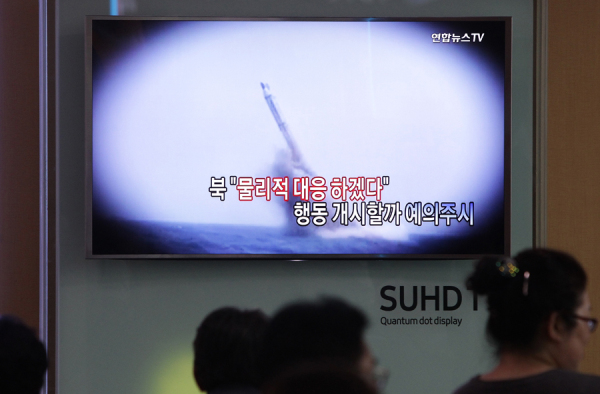Costly consequences of THAAD for Seoul
Updated: 2016-08-04 08:02
By Wang Junsheng(China Daily)
|
|||||||||
 |
|
ROK residents watch a television broadcast reporting the deploying the Terminal High-Altitude Area Defense (THAAD) at the Seoul Railway Station on July 13, 2016 in Seoul, the ROK. [Photo/VCG] |
By deploying its Terminal High-Altitude Area Defense system in the Republic of Korea, the United States will harm regional peace and stability, and put Seoul in a precarious position. The crux of the Barack Obama administration's "pivot to Asia" strategy is to consolidate its military presence in the region and THAAD is an important part of that move.
Apart from the ROK, the US also hopes to deploy the missile system in Guam, Japan and the Philippines. But since deployment of THAAD in the ROK was considered the most difficult to achieve, the Obama administration sees Seoul's nod as a key step forward in its "pivot to Asia" strategy and wants to complete the process before ROK President Park Geun-hye's term in office is over.
Donald Trump has said the ROK should be responsible for its own security, and this attitude of the Republican presidential nominee has been worrying Seoul. When the US withdrew parts of its forces from the ROK between 1950s and 1970s, Seoul felt "unsafe". So now, given Trump's stance, the Park administration seems eager to secure US protection by opening the door to the missile defence system. The deal could even include the introduction of US tactical nuclear weapons in the ROK arsenal in the future.
This should make clear why the US said it would bear all the expenses for the first THAAD in the ROK, and allowed the ROK military to test its radar electromagnetic wave radiation at its base in Guam on July 18.
Related Stories
DPRK fires 2 ballistic missiles to protest THAAD deployment 2016-08-03 14:05
China has every right to be concerned about THAAD 2016-08-02 09:54
ROK and THAAD 2016-08-02 08:17
THAAD – The American white lie 2016-08-01 10:03
Today's Top News
Ukraine's Savchenko on hunger strike
Chinese tourists robbed in France
5 feared dead as Russian helicopter shot down
China influence can soften blow of Brexit
Turkey summons German diplomat over Cologne rally
Khan parents chide Trump for lack of empathy
Lunar probe confirms no water on the moon
'China's Challenges' wins historic Emmy Award
Hot Topics
Lunar probe , China growth forecasts, Emission rules get tougher, China seen through 'colored lens', International board,
Editor's Picks

|

|

|

|

|

|







